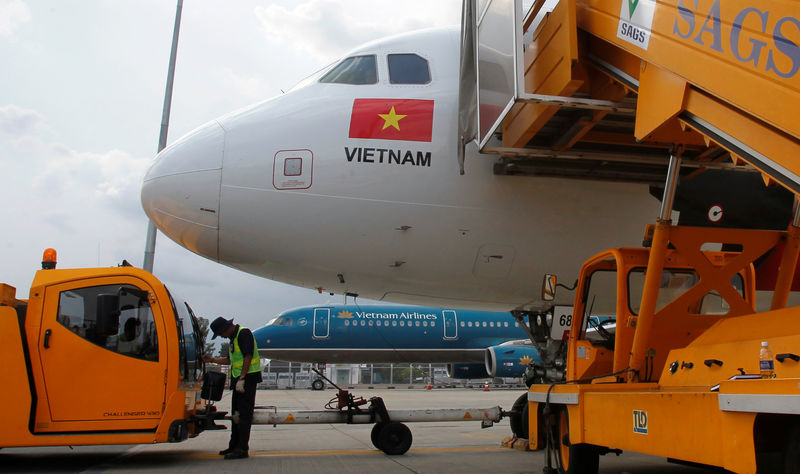By Koustav Samanta and Khanh Vu
SINGAPORE/HANOI (Reuters) - Vietnam's jet fuel demand will surge to a record this year as its tourism industry attracts a wave of new visitors and the country's airlines are rapidly expanding.
The country is on track to have 38 million international passengers and 16 million visitors this year, according to data from CAPA Centre for Aviation. That is up from 18 million passengers and 8 million visitors in 2015, according to the data.
"Aviation demand in Vietnam is booming... Fuel consumption in Vietnam will reach a record high this year and will keep rising for the years to come," said Tran Hoai Nam, vice president of Vietjet, Vietnam's biggest private airline.
He added Vietnam's growth in foreign arrivals was the highest in Southeast Asia, rising 8.7 percent annually.
The surge in traffic has translated into a rush of jet fuel demand in Vietnam. Through November, the country has imported 1.87 million tonnes of the fuel, according to customs data, equal to 14.8 million barrels, and up 18 percent from the same period last year.
"For 2018, jet fuel demand in Vietnam is estimated to be increased by about 20 to 25 percent in comparison with 2017, mostly due to the increase in consumption of the international flights," said a Hanoi-based trader at one of country's jet fuel suppliers, who asked to remain unidentified due to company policy.
Vietnam currently consumes about 18 million barrels of jet fuel per year, according to data from Petrolimex Aviation.
By 2035, Vietnam will have 150 million airline passengers per year, nearly four times what it was in 2015, according to a 20-year forecast from the International Air Transport Association (IATA).
Over the same period, India will have 442 million passengers, 3.6 times what it was in 2015, while China will have 1.3 billion passengers, 2.7 times what it was in 2015, IATA said.
In November, Vietnam issued an aviation licence to Bamboo Airways, which would be the country's fifth airline after Vietnam Airlines (HNO:HVN), Jetstar Pacific Airlines, Vietjet Aviation (HM:VJC) and Vietnam Air Services Co.
Bamboo is expected to launch its first flights within weeks. It signed a provisional deal in July to buy 20 of the wide-body 787-9 jets from U.S. manufacturer Boeing (N:BA) and agreed a memorandum of understanding with Europe's Airbus (PA:AIR) for up to 24 of the narrow-body A320neo jets in March.
VietJet, which currently operates 60 Airbus jets, has signed a $6.5 billion (5.2 billion pounds) agreement to buy 50 new jets.
GRAPHIC: Vietnam large passenger jet orders: https://tmsnrt.rs/2SFttz1
IMPORT RELIANCE
Vietnam's jet fuel imports will continue to surge as the country only has two refineries, Dung Quat in the central province of Quảng Ngãi and Nghi Son in Thanh Hoa province, near to the capital Hanoi, which only started operations this year.
"Both Dung Quat and Nghi Son refineries are primarily catered towards the production of gasoline and diesel, and thus, jet fuel yield is relatively low at 5 percent," said Peter Lee, an analyst at Fitch Solutions Macro Research.
Nghi Son, once fully operational, will produce about 4.6 million barrels of jet fuel per year, said a source at the refinery. Dung Quat can produce as much as 2.3 million barrels per year, according to the company website.
"Vietnam will be reliant on imports to meet most of its jet fuel demand going forward," Lee added.
Vietnam imports most its jet fuel from refineries in Singapore, Thailand and China, trade data showed.
Despite the steep growth outlook for Vietnam's aviation sector, passenger growth might may be uneven as the country grapples with capacity constraints at its airports.
Vietnam's biggest airport Tan Son Nhat, serving Ho Chi Minh city in the south, receives about 10 million more passengers per year than it is designed to serve.

The government is planning a second international airport at Long Thanh, 40 km (24 miles) east of Ho Chi Minh City, that will serve 25 million passengers a year starting in 2025.